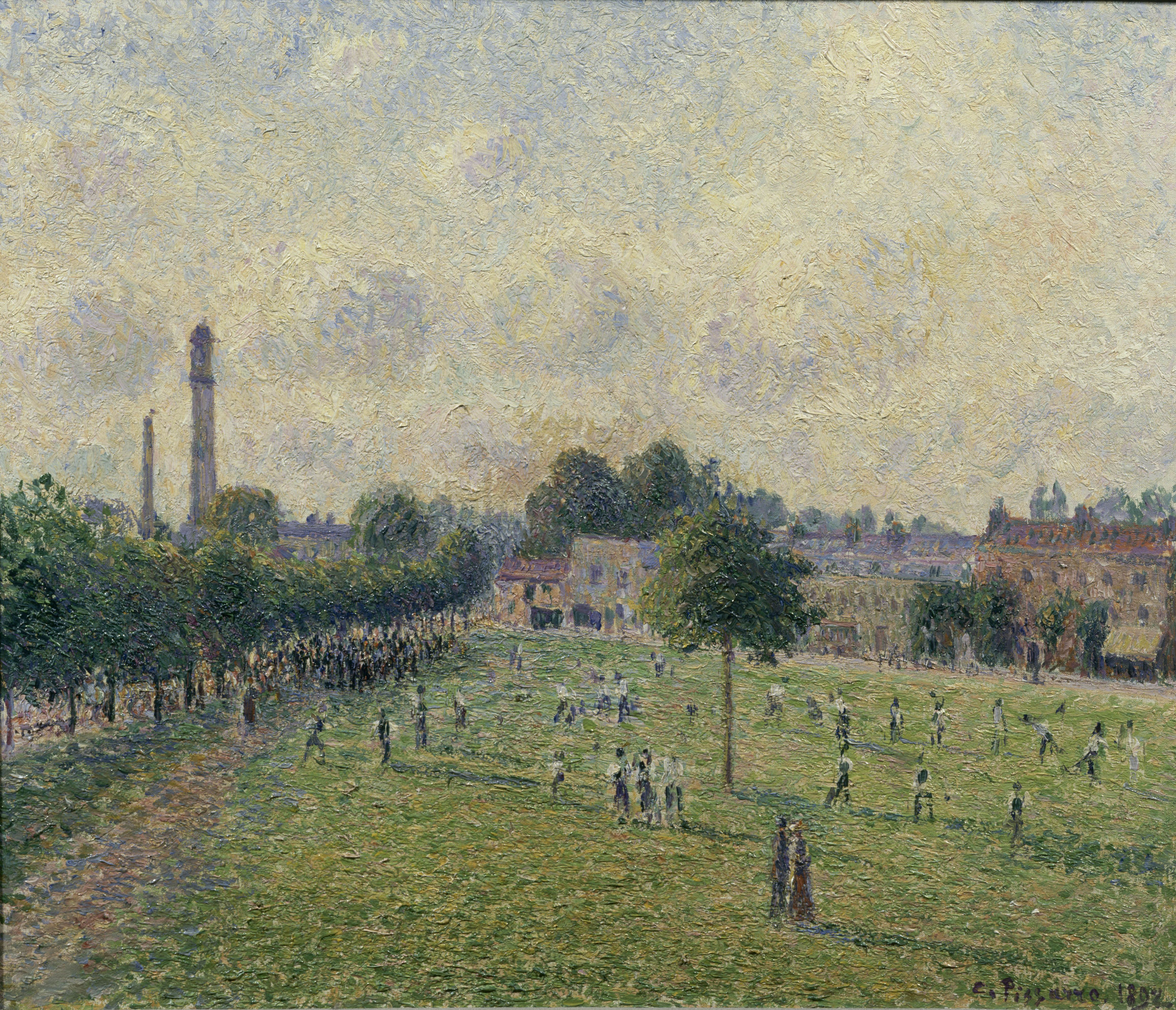The first exhibition to show how the migration of French Impressionists to London produced some of the movement’s best works.
It’s often said that creativity feeds off conflict. This couldn’t be more true of the paintings in the Tate Britain’s ‘Impressionists in London’ exhibition, which presents the work produced by a number of French artists who fled to Britain in the wake of the Franco-Prussian War. It includes pieces by Monet, Pissarro, Tissot, Sisley, Dalou and Legros.
In the exhibition’s first few rooms, the events of 1870-1 loom large. Tissot, who worked as a stretcher-bearer in the National Guard during this violent period, paints the blood spilled on the Parisian streets, collapsed makeshift hospital wards and seemingly endless executions. Elsewhere, we learn that the Tuileries Palace was in ruins and that the Louvre’s pavilions had been smashed open. It’s a chilling start to the display and a reminder of what war can do to a country in a matter of months.
However, as usual, the art on show becomes a consolation. The French artists, who were forced out of their homeland in the face of these painful events, produced some of their best work as refugees in London. These Impressionist paintings, marked by their sketchy, energetic appearance, capture the 19th-century capital beautifully. London is painted in a range of styles which skilfully map her moods, including a murkily hellish snapshot of Westminster by Giuseppe de Nittis and a more laid back, sun-kissed painting of Hampton Court Green by Camille Pissarro. In this way, you see the city anew through a French lens: the fog, crowds, lights, parks and the river are all filtered inventively through the Impressionists, who paint London with the enthusiasm and freshness of strangers.
The exhibition reaches its peak with Claude Monet, who produced many eye-popping paintings. Across the six months that he spent in London, he painted the Houses of Parliament, Charing Cross Bridge and the Thames with a distinct sense of flair. The restless brush strokes used in each piece help him render the city’s bustling landmarks more effectively. An entire room is dedicated to his ‘Houses of Parliament’ series and with good reason. In fact, while living in the city, Monet said, ‘I find London lovelier each day’. After seeing this exhibition, you will too.
Pricing
Members, Free
Adult, £19.70 (£17.70 without donation)
Senior, £18.70 (£16.70 without donation)
Concession, £17.90 (£15.90 without donation)
Under 12s, Free
The Tate Britain
Millbank, Westminster
London
SW1P 4RG
Opening Hours
Daily, 10.00 - 18.00
1 December, 10.00 - 22.00
By Ben Waters




